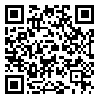Volume 3, Issue 1 (2015)
CLRJ 2015, 3(1): 143-164 |
Back to browse issues page
Download citation:
BibTeX | RIS | EndNote | Medlars | ProCite | Reference Manager | RefWorks
Send citation to:



BibTeX | RIS | EndNote | Medlars | ProCite | Reference Manager | RefWorks
Send citation to:
Khademi kulaei M, Bozorgi qale sary S H. A Comparative Study of the Concept of "love" from Pluto and Molana’s Perspectives. CLRJ 2015; 3 (1) :143-164
URL: http://clrj.modares.ac.ir/article-12-6483-en.html
URL: http://clrj.modares.ac.ir/article-12-6483-en.html
1- Assistant Professor in Persian Language and Literature, Payam Noor University, Tehran, Iran
2- M.A. in Persian Language and Literature, Payam Noor University, Tehran, Iran
2- M.A. in Persian Language and Literature, Payam Noor University, Tehran, Iran
Abstract: (10783 Views)
‘Love’, which has been so generously bestowed by God upon the inner and outer worlds of human beings is a fundamental and pivotal issue; since it has its roots in the nature of man and the essence of life, and attracts them subconsciously. Pluto (270 AD, p.203 or 204) and Molana (604- 672 Lunar) are among those thinkers, who have talked about and artistically elaborated on love and its related concepts. Influenced by the different thinking atmospheres of their time, their incompatible civilizations as well as other variables of their time that have differently affected them, the two high-minded elites, who had greatly affected the thinking of other thinkers educated by them, were led to view love differently.
The examination of the reflections of Neo-platonic thinking in the literary and theosophical texts including Molana Jalal-o-Din Balkhi’s Masnavi is important in many ways, and the important phenomenon of love is a profound and mysterious concept that, in a way, connects Plato’s theosophy with that of Molavi. Certain concepts in the reviewed works of these prominent characters, which have sometimes been taken as identical and influenced by each other, do seem different in some cases.
Despite a huge time gap –almost a millennium- between the writing time of “a collection of Pluto’s woks” and Molana’s Masnavi”, this paper aims to compare and contrast the concept of love in these two works through the library method of research using descriptive, inferential and analytic approaches to scrutinize some manifestations of similarities and differences between the viewpoints of these outstanding figures in the realm of insight and wisdom.
Article Type: Research Paper |
Subject:
-
Received: 2013/12/16 | Accepted: 2014/05/17 | Published: 2015/03/21
Received: 2013/12/16 | Accepted: 2014/05/17 | Published: 2015/03/21
| Rights and permissions | |
 |
This work is licensed under a Creative Commons Attribution-NonCommercial 4.0 International License. |








